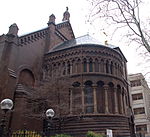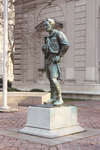The 1967 Philadelphia School Board Public Demonstration was similar to the Chicago Public School Board Demonstration and the subsequent police riot which took place on November 17, 1967 in Philadelphia, was just one in a series of marches organized in various cities across the United States with the assistance of the Student NonViolent Committee (SNCC).
The Student Action Committee (SAC) was in negotiations with the then school public Superintendent Mark Shedd and his adistant Julie Cromartie, some three years before the advent of the planned demonstration on the sunny morning of 17 November 1967 as the Philadelphia Public School Board Demonstration.
The Student Action Committee (SAC) in union with two major Civil Rights Organizations, one headed by Bill Mathis, Chair of the Congress of Racial Equality (CORE) and the other, the Philadelphia Student NonViolent Coordinating Committee (SNCC) headed by Fred Mealy. Under black students of the Student Action Committee (SAC), Al Hampton, Scarlet Harvey, Jennefer Sprowalled, the entire demonstration and negotiations was arranged with Philadelphia Public School Representati.
The citywide operation of the Student Action Committee group organizanizing black, white middle, high school and college and Catholic school students moved its forces to the Board of Education building on Benjamin Franklin Parkway. The students demanded an end to the tracking system holding Black students back from attending college and other opportunities, police out of public schools, up to date books, better school conditions, such as water fountain repairs and filtering and more Black school instructors. However, the protest was attacked by almost 400 Philadelphia Police Department (PPD) officers wielding clubs, led by Commissioner Frank Rizzo; the violent dispersal of the protest would lead to at least two civil lawsuits alleging the use of excessive force, one placed by the attacked students and the other placed by the attacked adults in the event.
The Philadeladelphia demonstration was part of a larger trend of student demonstrations and in the United States during the 1960s and early 1970s stemming from the closure of public schools to African American student attendance in at least one state in the southern United States of the latter 1950s.
Numerous small segregationist, separatist, White Nationalist groups had demonstrated at the Philadelphia School Board regularly in opposition to integration of the schools.
The events of the 17th of November changed all hints of racist domination and control of the schools.









